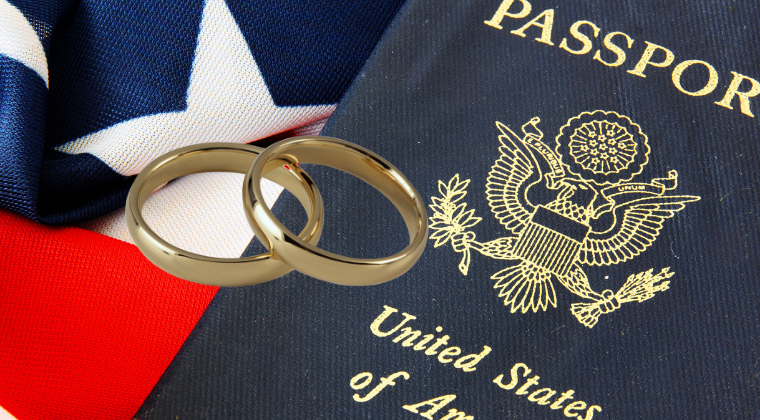You’re a business person who spends a great deal of time traveling overseas for business. Perhaps you regularly vacation in other countries. In these situations, it’s not unusual to meet and fall in love with someone overseas, sometimes with dreams of marriage. If you’re a US Citizen who’s gotten engaged to someone overseas, you can bring them to the US to start your new lives together. Doing this requires a K-1 nonimmigrant visa, also known as the “fiancé(e) visa”. Let’s look at what you need to know as you prepare to bring your fiancé(e) to the US.
Who Is Eligible for a K-1 Nonimmigrant Visa?
You’re eligible to apply for a K-1 nonimmigrant visa if,
- You are a US Citizen
- You have not already married
- Your fiancé(e) does not already legally reside in the US
- You and your fiancé(e) intend to marry within 90 days of their admission to the US
- Both you and your fiancé(e) are legally free to marry
- You and your fiancé(e) have met in person at least once in the last two years prior to filing for the K-1 nonimmigrant visa
Note that you can request a waiver of the meeting requirement if you can show that,
- Meeting would violate strict customs of your fiancé(e)’s culture or social practices
- Meeting would result in extreme hardship to you, the US citizen
What Does Valid Marriage Mean?

When discussing immigration around marriage, we often see where a marriage must be valid. We marry for any number of reasons, from family traditions, to emotional attachment, to the desire to start a family. Whatever your personal or cultural reasons for marriage, the US government places two primary requirements on determining a marriage’s validity
- Both parties must have bona fide intent to establish a life together in the US
- The marriage cannot be for the sole purpose of obtaining immigration to the US
What If Your Fiancé(e) Has a Child?
If your fiancé(e) has a child, they may be eligible to come to the US with your fiancé(e) or later after them (but not before). You would need to file a K-2 nonimmigrant visa provided the child is
- Under the age of 21
- Is and remains unmarried during the immigration process
What Is the Process of Bringing Your Foreign Fiancé(e) to the US?
To bring your foreign fiancé(e) to the US, you will work with the USCIS, the U.S. Department of State (DOS), and U.S. Customs and Border Protection (CBP). Throughout the process these agencies may conduct background and security checks on you and your fiancé(e). This can be a complicated process, so let’s look at the steps.
- Step 1: You petition for your fiancé(e) with the USCIS. You file Form I-129F, Petition for Alien Fiancé(e). The USCIS will review the form and documents you submit. If they approve the form, they send the approval to the DOS National Visa Center (NVC).
- Step 2: Your fiancé(e) will apply for a K-1 nonimmigrant visa after the NVC forwards the approved Form I-129F form to the US Embassy or consulate where they live and will apply. The DOS consular will review the application and supporting documentation. If they approve, your fiancé(e) will be granted a K-1 nonimmigrant visa valid up to 6 months for a single entry.
- Step 3: Your fiancé(e) travels to the US and seeks admission at a port of entry. Here, the CBP officer will make the ultimate decision to admit your fiancé(e) (remember a visa does not guarantee entrance).
- Step 4: If your fiancé(e) is granted entry into the US, both of you marry each other within 90 days.
- Step 5: After you marry, you have 90 days to adjust status with the USCIS. Your spouse applies for a Green Card by filing Form I-485, Application to Register Permanent Residence or Adjust Status. The USCIS will review the form and supporting documentation. As long as everything is approved, your new spouse should receive their permanent Green Card.
Do You Need an Immigration Lawyer?
Each couple and situation is unique. It’s important to discuss your immigration needs with a knowledgeable attorney. Schedule a consultation today. Our firm offers services in English, Russian, Ukrainian, and Spanish.
